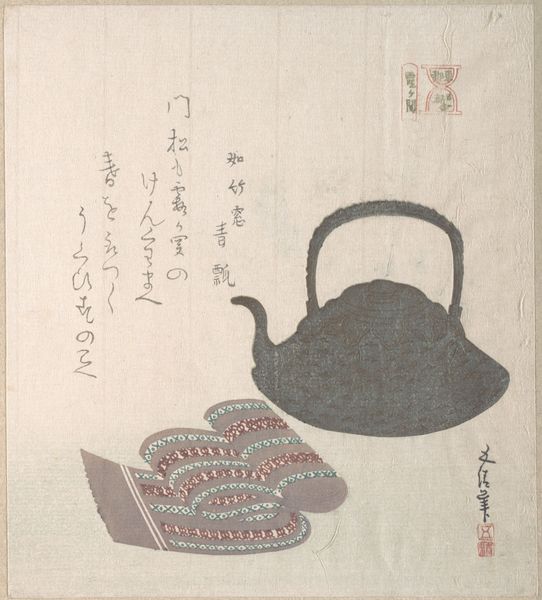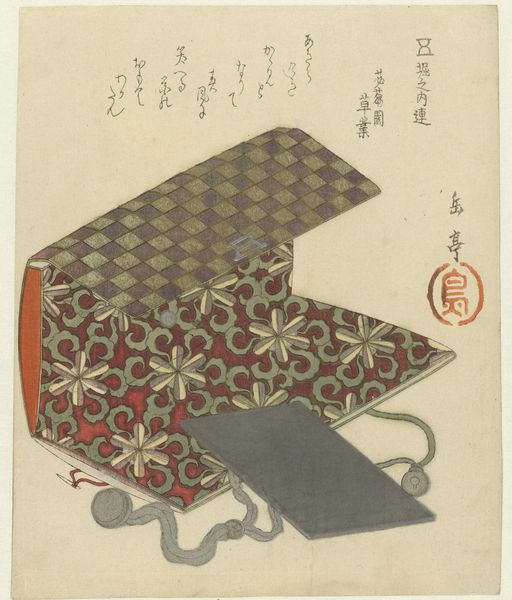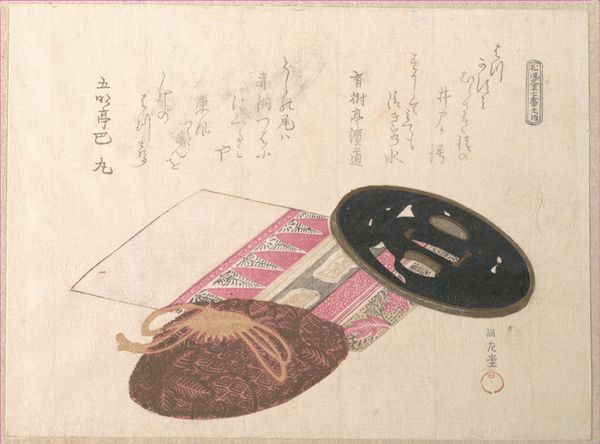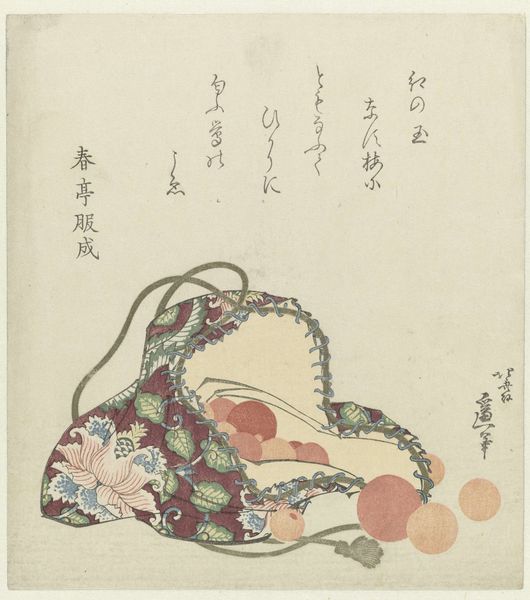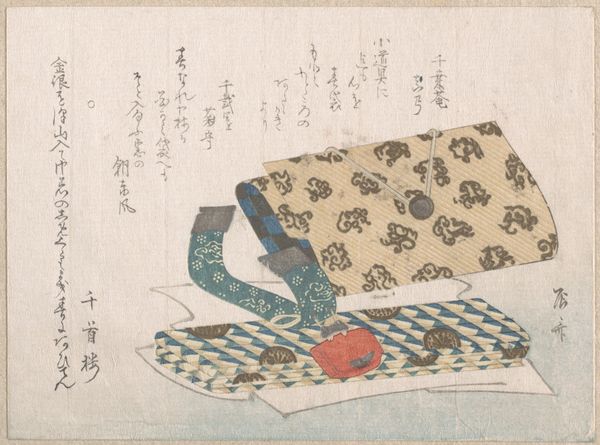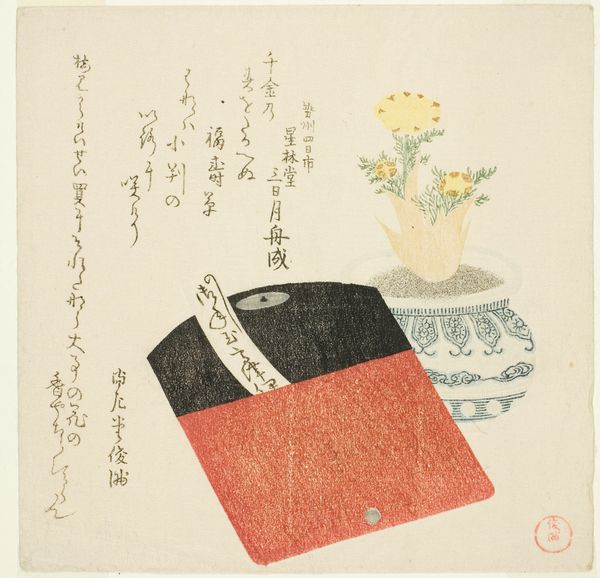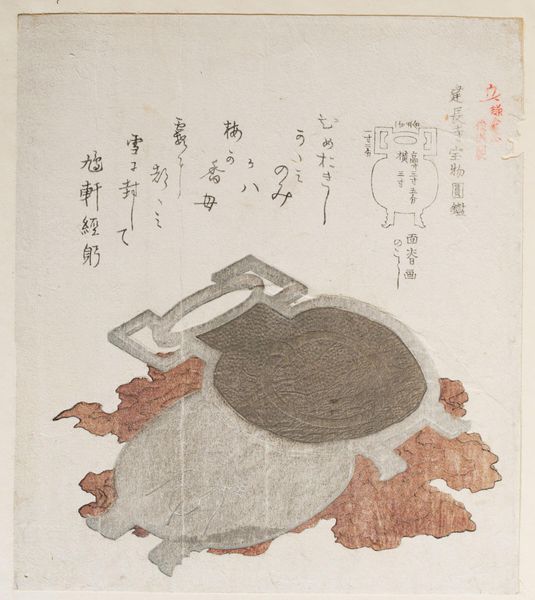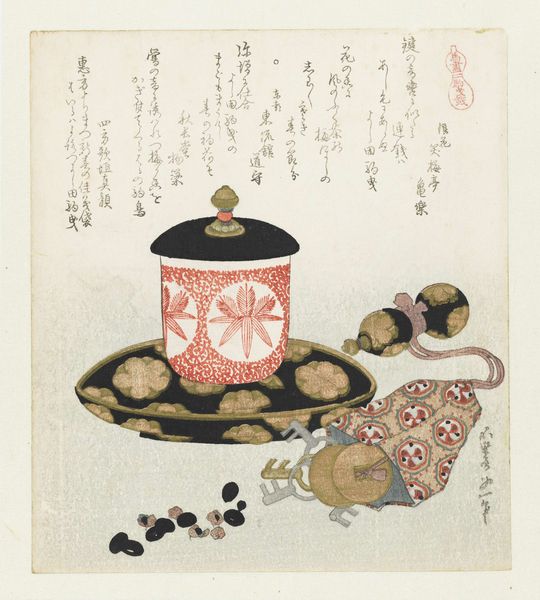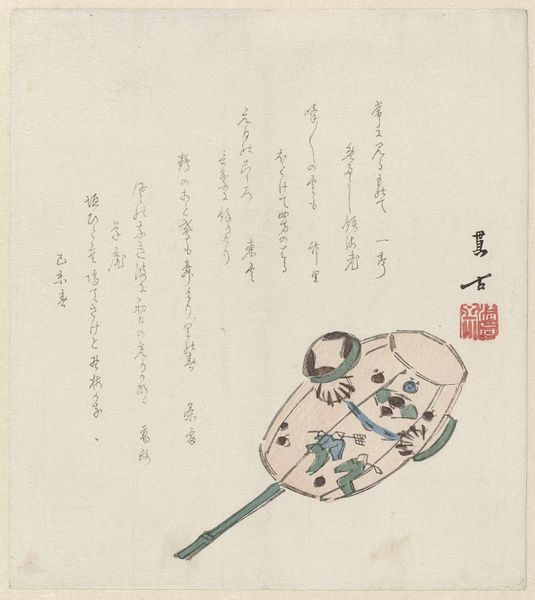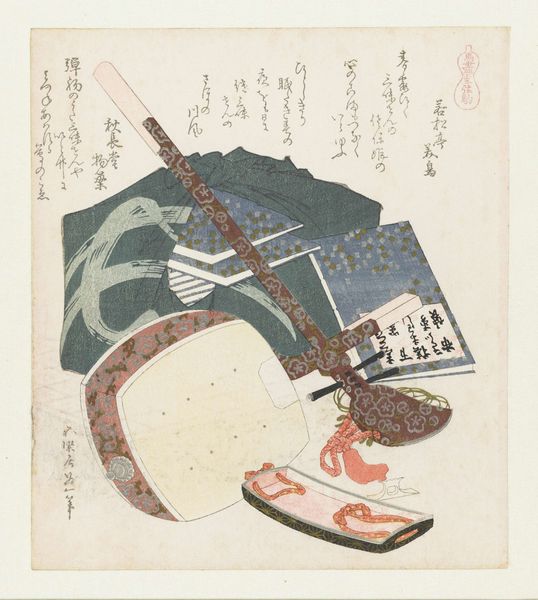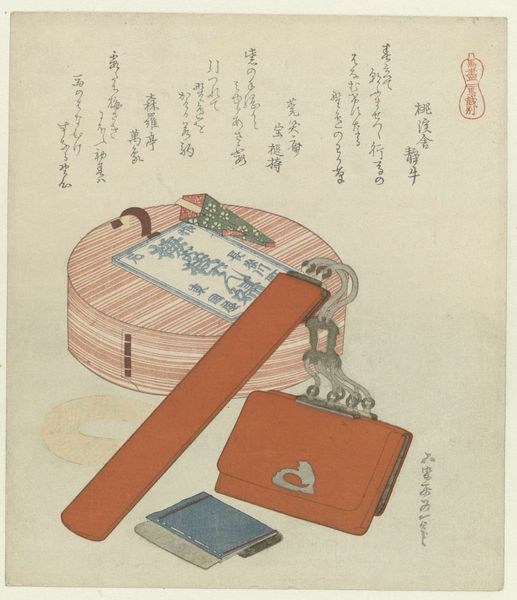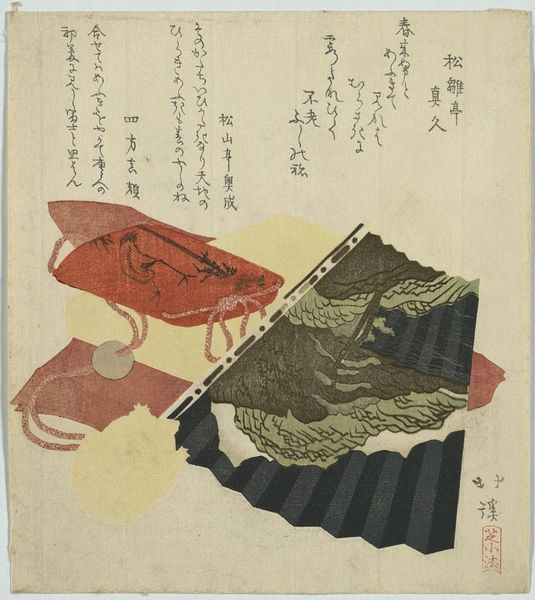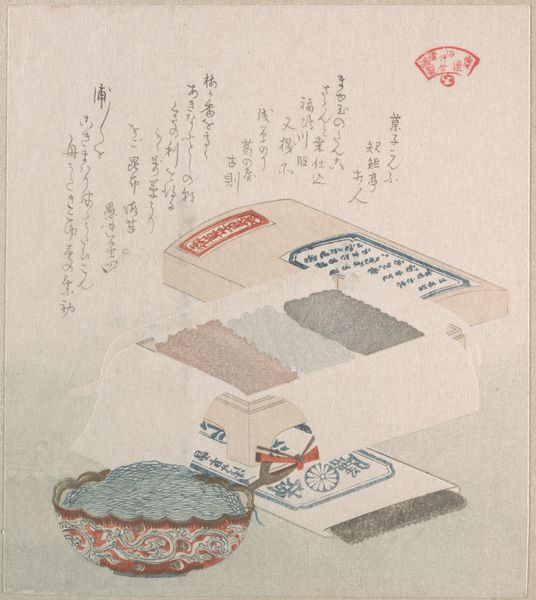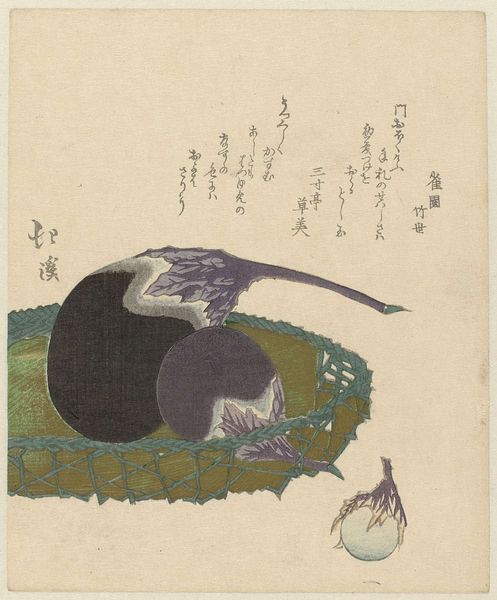
drawing, ink
#
drawing
#
blue ink drawing
#
ukiyo-e
#
ink
#
watercolour illustration
#
watercolor
Dimensions: height 195 mm, width 170 mm
Copyright: Rijks Museum: Open Domain
Curator: Here we have "Kasumigaseki: waterketel en ceintuur," or "Kasumigaseki: Water Kettle and Belt," a lovely ink drawing dating from around 1819 by Sunayama Gosei. Editor: My first impression is one of quiet contemplation. The muted colors and simple composition evoke a sense of stillness, a peaceful domestic scene. Curator: Indeed. Gosei was working in the ukiyo-e tradition, focusing often on landscape and genre scenes. While the ukiyo-e print market surged, a wide range of drawing practices existed, frequently supported by smaller circles or specific cultural niches. Notice the flat perspective characteristic of the style. Editor: And yet, the kettle and belt are rich with symbolic potential. The kettle, particularly in East Asian cultures, often represents hospitality, warmth, and the ritual of tea. Curator: Right. And considering the prominence of the tea ceremony within Japanese social and political life, it seems a careful deployment of symbolic objects here. Gosei likely targeted the drawing towards a specific patron invested in that milieu. Editor: Precisely. The belt, arranged with such careful attention to its folds and patterns, could signify status and power. Is there a correlation between the family associations attached to belts, or particular patterns within a specific subculture? Curator: Yes, you might be correct in noting it’s less of an accessory and more of a cultural marker. Access to items such as a fine belt was regulated in Japanese society, reflecting hierarchical structures of the time. One might want to remember it’s not a ‘still life’ – the social milieu is alive in the image. Editor: What interests me is the tension between the seeming simplicity and the deep cultural encoding at play here. Gosei invites us to reflect on the everyday objects that carry weighty meanings. Curator: Well, analyzing it in this light reveals much about Japanese society and how those quotidian rituals of exchange reinforced social order and belonging in the Tokugawa Era. Editor: Looking closely, it becomes more and more engaging. There is an inherent appeal in discovering more meaning packed into these common symbols than you see at first glance.
Comments
No comments
Be the first to comment and join the conversation on the ultimate creative platform.
